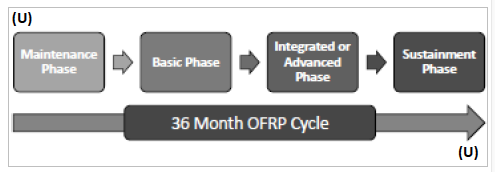The following is the Jan. 31, 2020 Department of Defense Inspector General report, Audit of Readiness of Arleigh Burke-Class Destroyers. The public report was released on Feb. 4.
From the report
The objective of this audit was to determine whether the Navy identified and addressed readiness challenges of the Arleigh Burke-class destroyers. Although we assessed all five readiness areas (personnel, equipment, supply, training, and ordnance), we focused this report on whether the Navy identified and addressed training deficiencies between 2013 and 2018 for the Arleigh Burke-class destroyers.
Background
As of August 16, 2019, the Navy had a battle force of 290 ships, including Surface Force ships, homeported in the United States or forward-deployed to foreign nations. There are different types of Surface Force ships, such as guided-missile cruisers, guided-missile destroyers, and littoral combat ships. Within each ship type, there are one or more classes. One of the classes within the guided-missile destroyer type is the Arleigh Burke-class. Arleigh Burke-class destroyers are multi-mission, surface combatant ships capable of conducting anti-air warfare, anti-submarine warfare, and anti-surface warfare.
According to a Navy instruction, ship incidents include fires, flooding, explosions, collisions, allisions, and groundings. Between May 2012 and November 2017, there were at least 10 incidents involving Surface Force ships. Of these 10 incidents, 4 involved an Arleigh Burke-class destroyer and resulted in the deaths of 17 U.S. sailors, multiple injuries to individuals aboard the ships, and damage to the ships and their equipment. After the incidents, the Navy released the “Comprehensive Review of Recent Surface Force Incidents” and the “Strategic Readiness Review.” The Navy also established the Readiness Reform and Oversight Council in January 2018 to oversee and ensure the implementation of the 117 recommendations from the Strategic Readiness (U) Review, the Comprehensive Review of Recent Surface Force Incidents, and other reviews, such as those performed by the Government Accountability Office.
In November 2014, the Navy issued the Optimized Fleet Response Plan (OFRP) as a framework to improve fleet readiness. The OFRP cycle consists of the following phases, which are accomplished in a series: maintenance phase, basic phase, integrated or advanced phase, and sustainment phase, as shown in Figure 1.
 The Navy’s Surface Force Readiness Manual (SFRM) is the Navy’s plan for ships, staffs, and units to execute the OFRP. The SFRM requires each ship to achieve prescribed readiness standards and demonstrate proficiency before advancing through the OFRP to maximize effectiveness.
The Navy’s Surface Force Readiness Manual (SFRM) is the Navy’s plan for ships, staffs, and units to execute the OFRP. The SFRM requires each ship to achieve prescribed readiness standards and demonstrate proficiency before advancing through the OFRP to maximize effectiveness.
The Defense Readiness Reporting System–Navy (DRRS-N) is the Navy’s authoritative system for readiness reporting. DRRS-N collects and displays the status and availability of resources for the following areas, by unit, to accomplish assigned missions: personnel, equipment, supply, training, and ordnance.
Download the report here.





